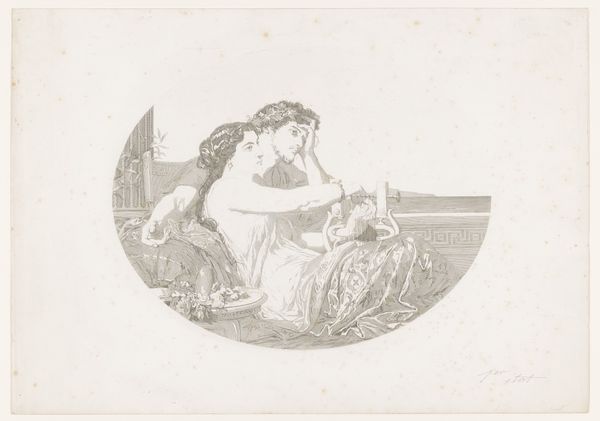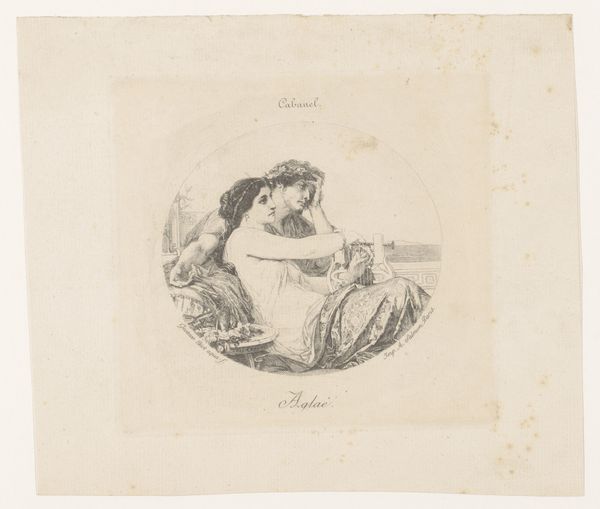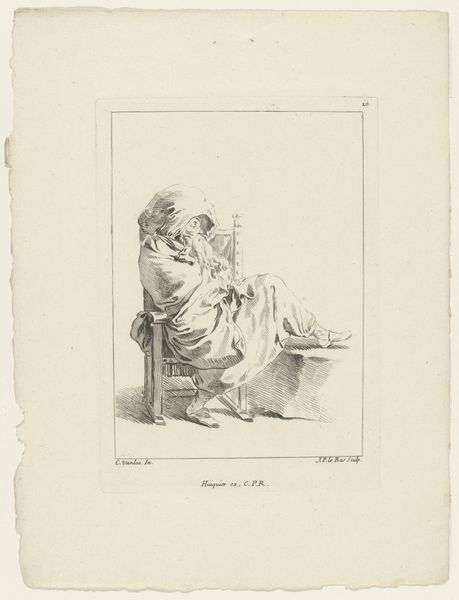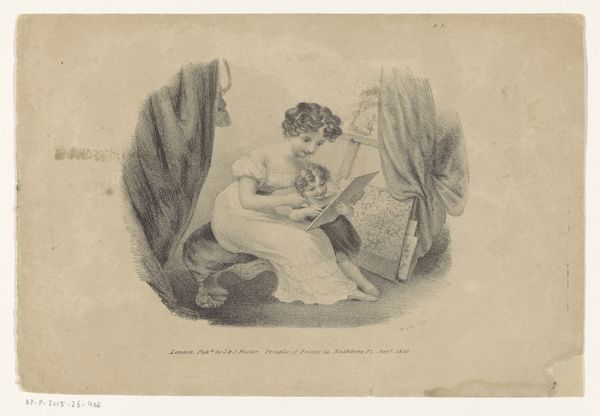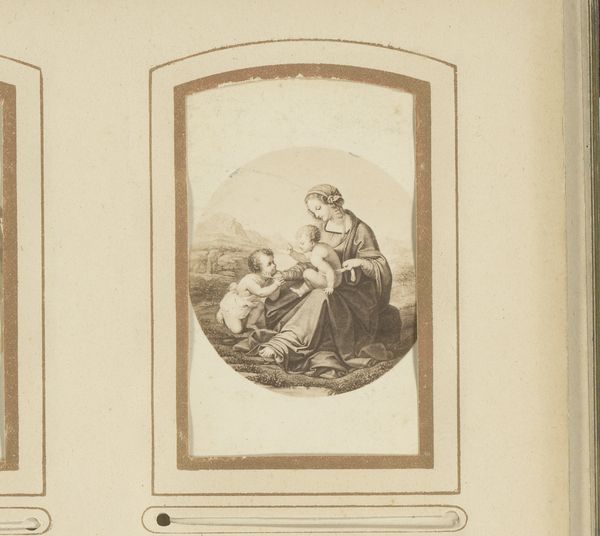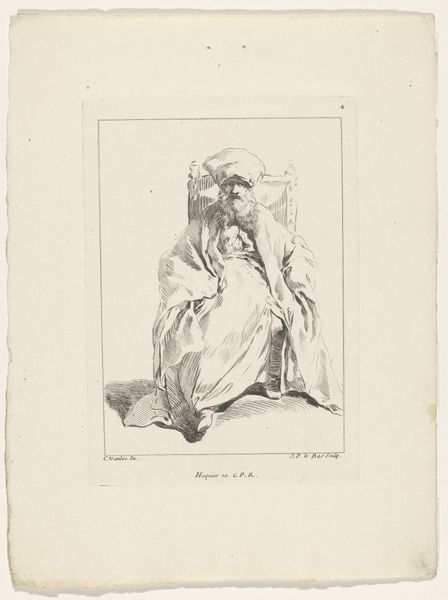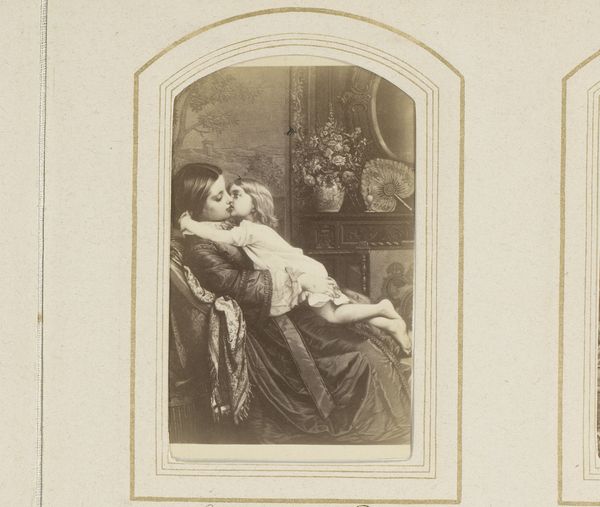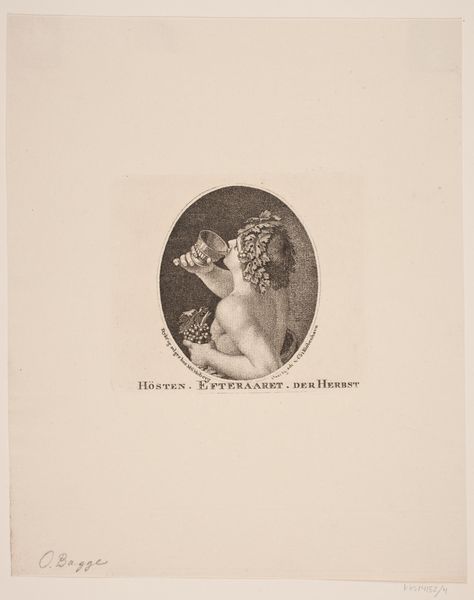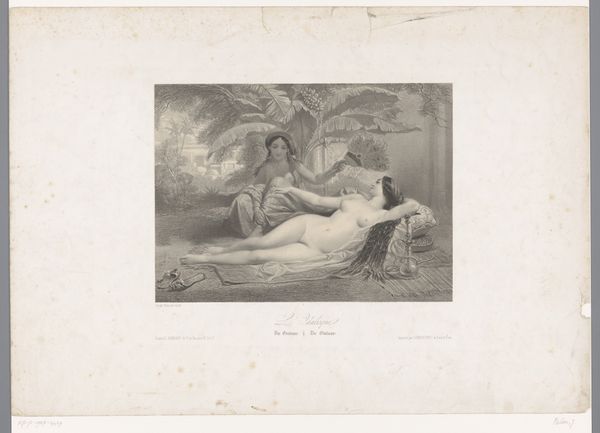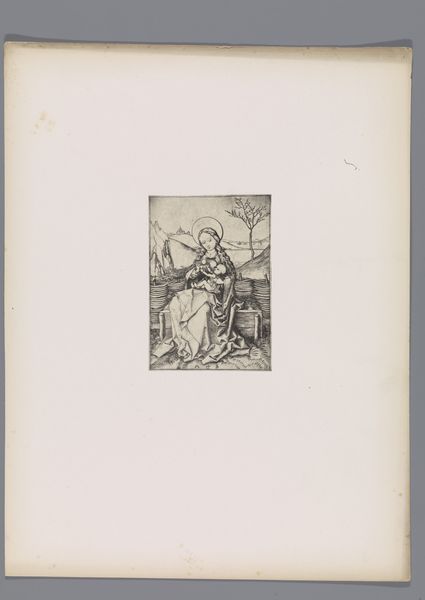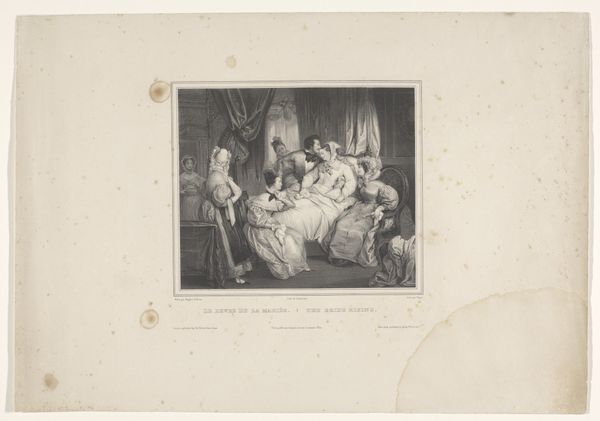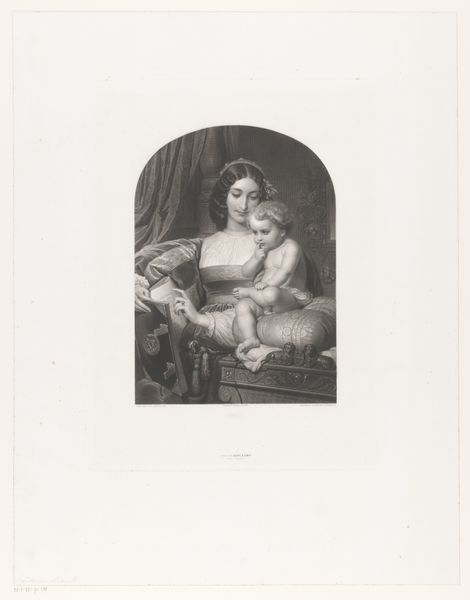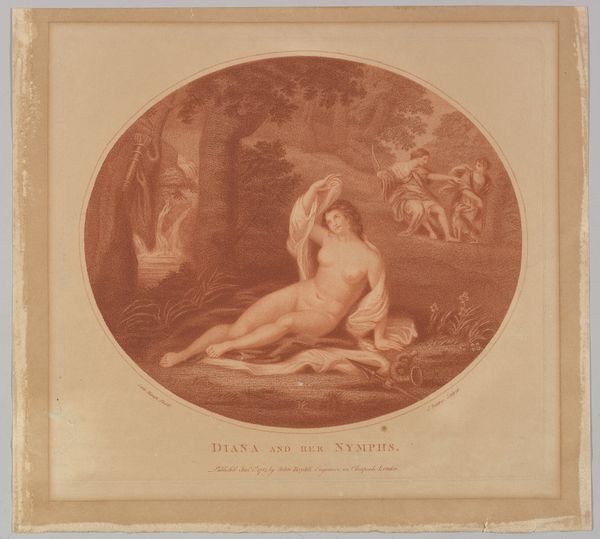
Dimensions: height 399 mm, width 445 mm
Copyright: Rijks Museum: Open Domain
Curator: Just look at this engraving by Gustave Joseph Biot! It’s called "Aglaé en Bonfatius van Tarsus" and it’s housed here at the Rijksmuseum. It looks like it was made somewhere between 1843 and 1905. Editor: My first impression? Melancholy draped in elegance. There's a definite stillness to the scene, despite all the subtle activity hinted at in the folds of their garments and the suggestion of a landscape beyond. Curator: That melancholy resonates deeply, especially considering the historical context. It portrays Aglaé, a Roman noblewoman, and Bonfatius, her servant who eventually became a saint. Editor: So, already there is this layered dynamic here, class divisions within an obviously sensual scene... It gives this feeling of almost forbidden closeness. How might such power structures work on themes of romanticism here? Curator: It’s an exploration, I think, of repentance, ultimately. Bonfatius goes to the East to retrieve Christian relics, but he succumbs to hedonism before converting, being tortured and then martyred. Aglaé, in turn, repents and dedicates her life to God. The stillness might reflect that turning inward. Editor: That’s a wonderful interpretation. See, when I look at them, I keep circling back to the artist’s use of light and shadow. They are wrapped up in luxurious clothing but there are heavy contrasts, as if playing the theme that worldly riches have not brought true joy or fulfillment. And they are looking elsewhere - in the same direction but separately from each other - as if looking for different answers, at that. Curator: Biot was working in an era steeped in both Classicism and Romanticism. The figures’ poses echo classical ideals, that draped fabric almost a Greek toga, but their emotions—the slight unease in her eyes, the resignation on his face —those pull us towards Romanticism’s embrace of subjective feeling. Editor: Right, that classic calm and romantic unease work so powerfully together! This one makes me think about where my gaze lands and the ways my expectations may be undone as the image slowly reveals its hidden meanings and contradictions. Curator: And the transformation each figure undertakes… the artwork, in its static way, almost embodies it by bringing Classicism and Romanticism, repentance and previous excesses, together.
Comments
No comments
Be the first to comment and join the conversation on the ultimate creative platform.
